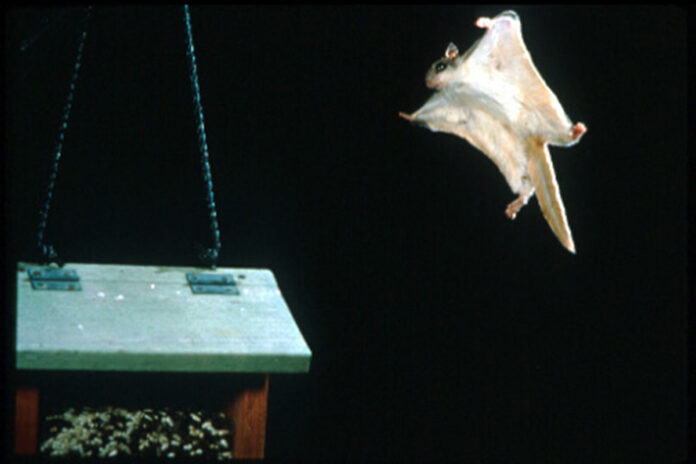
It’s hard to imagine hordes of squirrels swarming over farmland and decimating crops. But that’s what was happening in Ohio in the early 1800s.
The “plague” of Eastern gray squirrels caused “famine and suffering” for early settlers, as one author put it, to the point that the state legislature put a bounty on their little heads.
In 1807, legislators said every person who paid county taxes also had to present the number of squirrel scalps their township required. The number could be “no less than 10” or “exceed 100,” according to a 1948 study by Charles Dambach, Ohio State University Department of Zoology and Entomology.
The law even levied a penalty of three cents per scalp for taxpayers who failed to meet the quota.
The kind of dense, hardwood forests that covered Ohio in pre-settlement days are the preferred habitat for Eastern gray squirrels. When European settlers came, they cleared the forests to build homes and establish farms, leaving the squirrels homeless and without the nuts, seeds and fruit on which their lives depend.
In desperation, the grays migrated in the thousands, maybe millions, to farm fields, devouring young plants and leaving pioneers with empty barns and pantries. It sometimes took a month for a herd to move through an area, according to the Ohio Department of Natural Resources website.
In addition to the bounty, a particularly harsh winter in 1807-08 almost eliminated squirrels from some areas of the state. Perhaps that is why the legislature repealed the law setting squirrel scalp quotas in 1809.
And where was the brownish, familiar fox squirrel in all of this? Mostly absent. Fox squirrels prefer 10- to 20-acre woodlots bordering open agricultural fields or forests that border rivers and streams, according to the ODNR. It wasn’t until settlers cleared the dense forests that fox squirrels began to migrate to Ohio from the midwestern plains.
Still, they may not have fared much better than their gray cousins who were on the state’s hit list. Eastern fox squirrels make a yummy addition to stewpots and are 50% larger than the grays. Squirrels were the last game animals in Ohio to get the protection of a limited hunting season, and that wasn’t until the late 1880s.
Ohio squirrels
The four types of squirrel that currently make Ohio home are the Eastern gray, Eastern fox, red squirrel and Southern flying squirrel. Of those, the flying squirrel may have the highest population, according to the ODNR, although that would be difficult to prove since flying squirrels are strictly nocturnal.
“I’ve never set eyes on one, though I’ve been in places where I know they exist,” said Mark Wiley, wildlife biologist with the Ohio Division of Wildlife.
Nor are they hunted, said Wiley, whose responsibilities include monitoring the harvest of small game species. The squirrel season is Sept. 1 through Jan. 1, and the bag limit statewide is six per day. The types listed in the hunting regulations as legal are gray, fox, red and black squirrels.
With its reddish color, white belly and bushy tail, the red squirrel is Ohio’s smallest tree squirrel. It’s also called the pine squirrel because it prefers to live in mature conifer forests.
Unlike its gray and fox relatives, the red squirrel doesn’t bury food for consumption at a later date. Instead, it makes piles or “middens” of pine cones that can be 30 feet across and more than a foot deep, according to the Mammals of Ohio Field Guide.
Oddly, the squirrels listed as “black” on Ohio’s hunting regulations are really gray squirrels. They have a genetic condition called melanism that makes their fur darker, Wiley said
While they’re actually gray squirrels, black squirrels are listed on the regulations “just so people know they’re legal to hunt,” he said. Gray squirrels with melanin variations can also be white and brown.
Varying diets
The diets of the four Ohio squirrels differ. Southern flying squirrels eat hickory nuts, acorns, wild cherry pits and other seeds, as well as insects, mushrooms, grapes and the bark of some hardwood trees. Red squirrels eat shoots and flowers in the spring and nuts, fruits and seeds from cones in the fall and winter.
Gray squirrels hang out in hardwood forests but are also found in the old trees of parks, cemeteries and yards in urban and suburban areas. They eat the nuts, seeds and fruit of the trees, which are collectively called “mast.” Wiley said their winter survival and reproduction rates in the spring can suffer if the mast “crop” is not good in the fall.
Fox squirrels also feed on mast, but their diets include corn and the “waste grain” that combines leave behind in the fields, he said. Because of that, the highest populations of fox squirrels tend to be in the agricultural areas of central and western Ohio.
And since they can still eat grain in the winter, the fox squirrels’ numbers are less dependent on mast production than the gray, though populations of both appear to be stable in recent years, Wiley said.
Assets
Far from a plague, squirrels are now considered tremendous assets to the natural environment. The gray and fox squirrels’ habit of burying food for future consumption, called caching, “is vitally important to our forest systems,” he said. “They only return to uncover a fraction of the acorns or other nuts they bury, so they are actually planting seeds that later sprout.”
There’s no evidence that today’s squirrels invade farm fields, plucking newly-planted seeds out of the ground or chowing down on young plants. At most, a few may become nuisances by chewing wires or finding their way into attics.
In those cases, it’s best to call a licensed professional to remove them, Wiley said.
No scalps required.











